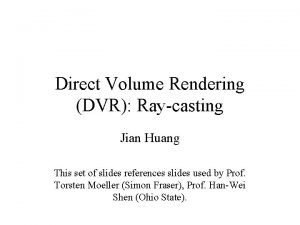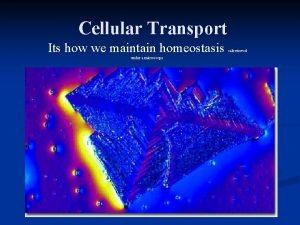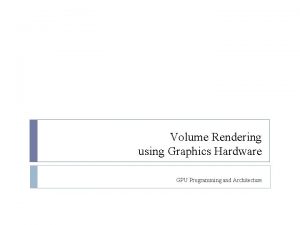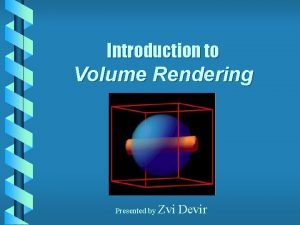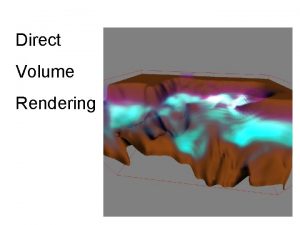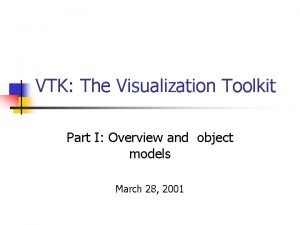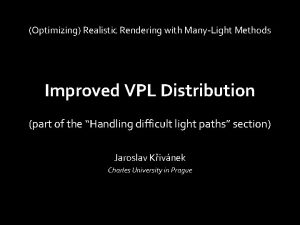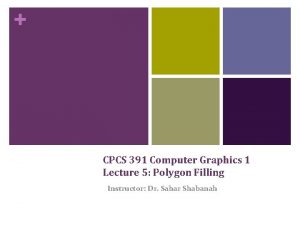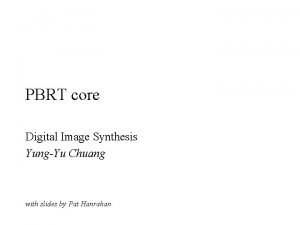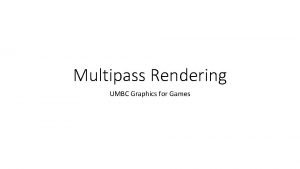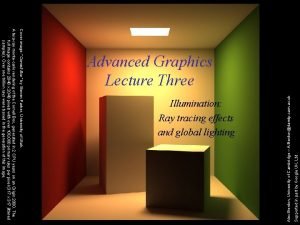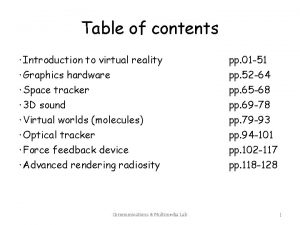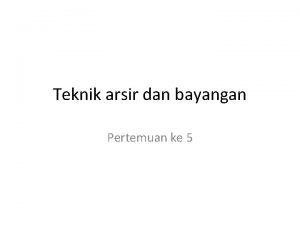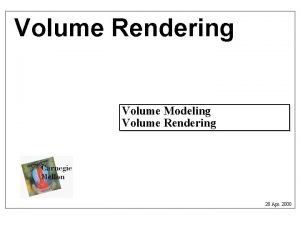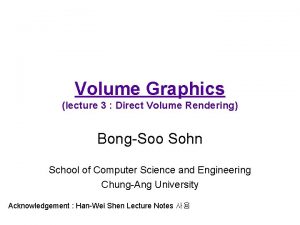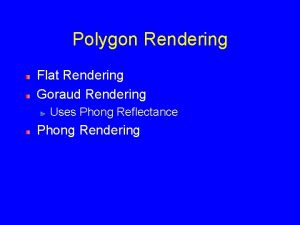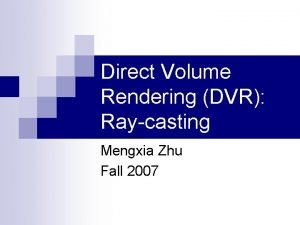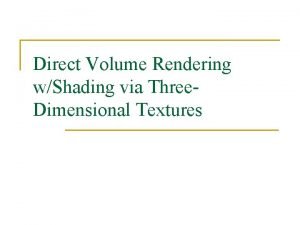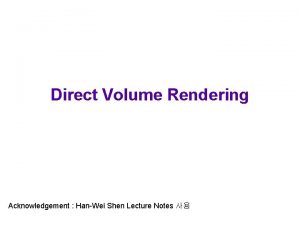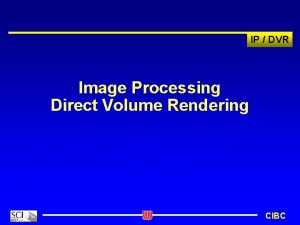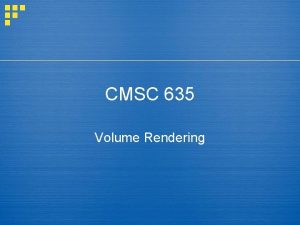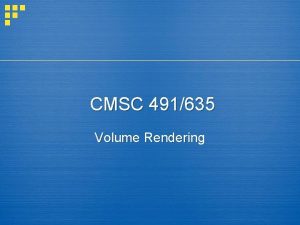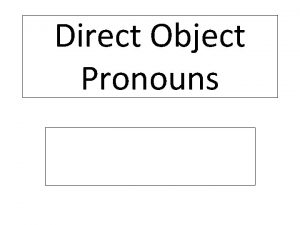Direct Volume Rendering What is volume rendering Accumulate

















- Slides: 17

Direct Volume Rendering

What is volume rendering? • Accumulate information along 1 dimension line through volume

Volume rendering vs. isosurfaces • • • No intermediate geometry No thresholding needed View dependent Uses all data instead of just some Fuzzy vs sharp appearance

Two General Methods Two general methods: –Image order: ray casting –Object order: splatting

Other methods (handwaving only!) • Texture slabs – Volume loaded into texture map memory of graphics card – “slab” between each pair of volume rendering slices – Pre-integration of volume rendering integral possible

Other methods, cont’d • Fourier volume rendering – Many 1 D projections from unique angles – 1 D Fourier transform interpolated to 2 D array F(wx, wy) – Invert Fourier to recover original density function f(x, y)

The Volume Integral • • • B = ∫I D (cos ) e- ∫D ds dt : angle between I & E at each voxel on ray B: cumulative attenuated info along ray : decay constant D ds: accumulated densities between voxel & I light source E Attenuate: to lessen the amount, force, magnitude, or value of

Image Order, color C, opacity • Ray Casting • 3 D density data (e. g. , CAT scan) – 3 D color C(x, y, z) – 3 D opacity (x, y, z) DVR • C(x, y, z) determined by gradient (“surface” normal) & lighting (independent of other volume voxels between the point & the light) • (x, y, z) determined by mapping density values to different types of tissue

Raycast! • Raycast: combine c & into C(R), color seen by ray R. K K C(R) =∑ C(R, k) (1 - (R, j)) k=0 j=k+1 (R, k) : kth voxel along ray C(R, 0): color of background (back to front!) (R, 0) = 1 (opaque background) For each pixel, shoot ray, calculate C(R)

Raycasting Variations/Issues 1. MIP- maximum intensity projection good for noisy data but lose differentiation of in front/behind - where does max lay? A Scalar value Single Ray Max intensity B Mean Intensity Distance along ray C C(R) = A or C(R) = B or C(R) = C, (distance to reach accumulated value)

More Variations/Issues 2. Sampling • Regular sampling – What is correct step size? Computation cost vs smoothness, may miss details • Cell intersection – What if ray enters near 90 degrees? – Bresenham method – Other issues covered in VTK text

More Variations/Issues • Parallel (easy for hardware!) vs. perspective projection( will image warp? ) • Starting point for sampling Initial point of ray 1 st intersection

More Variations/Issues • Data vs color – Calculate color at each vertex, then trilinear interpolate to sample – Use data at each vertex, trilinear interpolate to sample. THEN convert to color based on interpolated values • Early termination based on accumulated opacity

Object Order • For each voxel – Project (throw) voxel to projection screen – Apply filtering to ‘splat’, e. g. gaussian, proportional to distance from plane – Alpha blending – Splatting may be done • Front to back • Back to front

Object Order • Discrete process which produces holes on the periphery or when perspective projection gets extreme. ! • Countered by distributing the energy across multiple pixels via a footprint table. All splats make a footprint and, using the table, adjustments can be made before rendering. Note: Footprint is the same for each voxel when using parallel projection

Coherent Projection • • Scanline algorithm Much faster than splatting for parallel projection Scan converts the depth information behind each projected polygon. (Recall scan conversion: line-by-line, fill polygons) • Interpolated data and color samples used in raycasting can be accounted for by integrating the values at each scan converting step.

 Raycasting dda
Raycasting dda During intense exercise potassium tends to accumulate
During intense exercise potassium tends to accumulate Volume rendering tutorial
Volume rendering tutorial Introduction to volume rendering
Introduction to volume rendering Indirect volume rendering
Indirect volume rendering Google visualization toolkit
Google visualization toolkit Car paint rendering
Car paint rendering Radiosity rendering
Radiosity rendering High dynamic range rendering
High dynamic range rendering Graphics rendering
Graphics rendering Guillaume fenelon
Guillaume fenelon Rendering equation
Rendering equation Vray beauty pass
Vray beauty pass Multipass rendering
Multipass rendering Photorealistic rendering carlsbad
Photorealistic rendering carlsbad Radiosity rendering
Radiosity rendering David rosen sega
David rosen sega Arsir
Arsir
